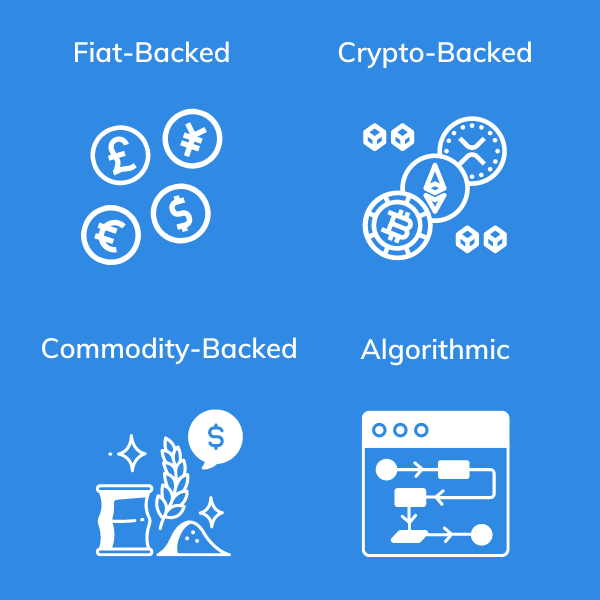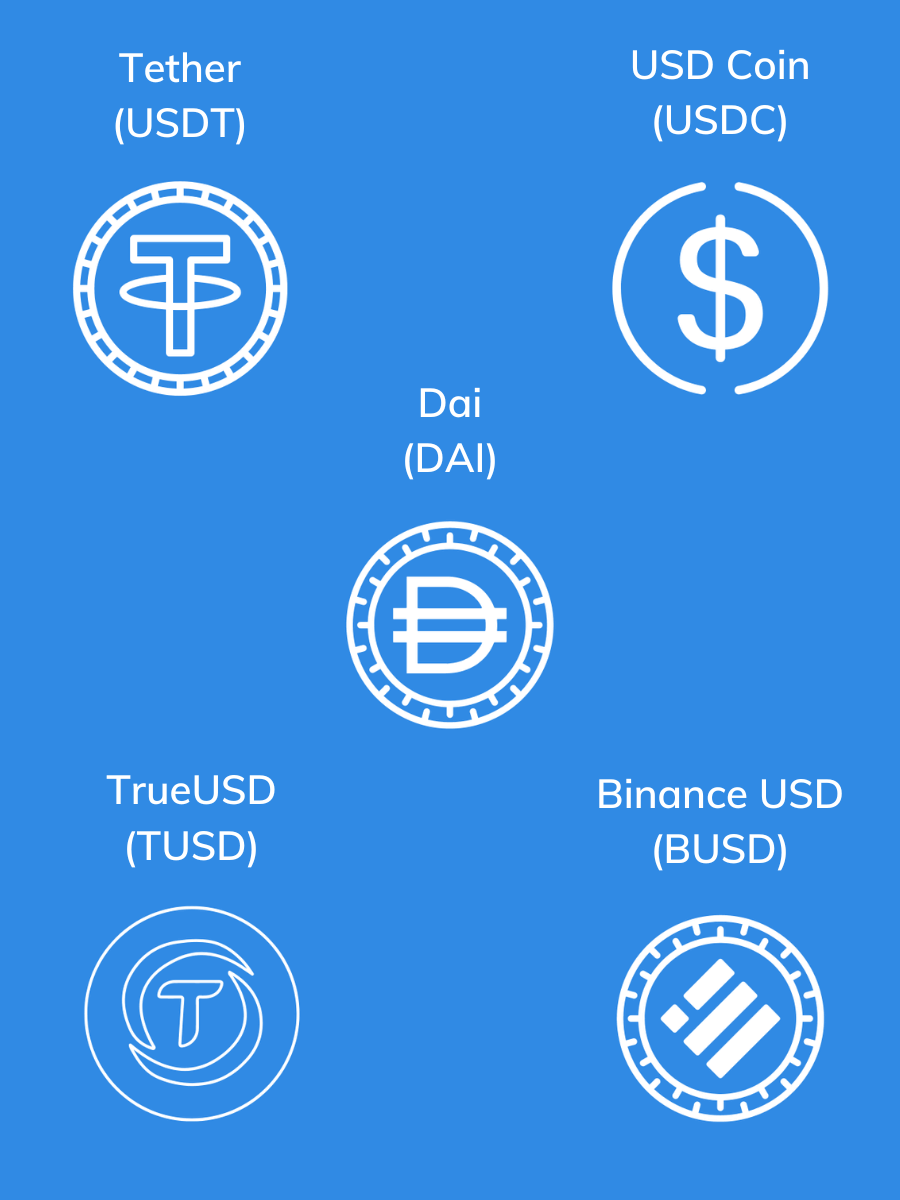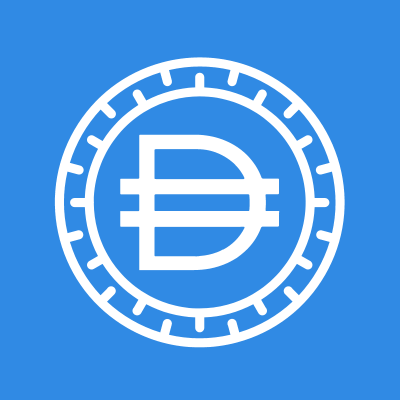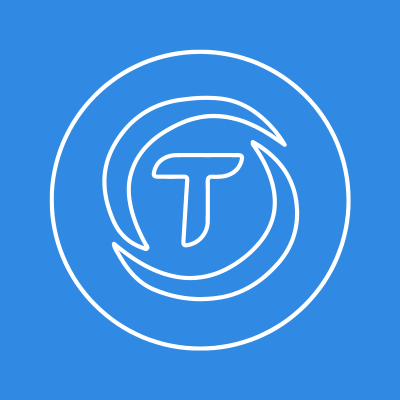Key Takeaways
- Stablecoins are cryptocurrencies that are pegged to an external factor like the US Dollar, providing stability in an otherwise volatile market.
- There are four main types of stablecoins: fiat-backed, crypto-backed, commodity-backed, and algorithmic stablecoins.
- Factors to consider when evaluating the safety of stablecoins include transparency and auditability, compliance with regulations, underlying asset stability, and historical performance.
- The safest stablecoin options based on these factors are Tether (USDT), USD Coin (USDC), Dai (DAI), TrueUSD (TUSD), and Binance USD (BUSD).
What is the safest stablecoin?
In the ever-evolving realm of cryptocurrencies, where volatility reigns supreme, stablecoins stand strong as shining beacons of stability.
To summarize, the value of stablecoins is pegged to some external factor like the US Dollar. This prevents their price from fluctuating all over the place, no matter how the rest of the market is behaving.
This makes stablecoins an excellent option for storage and transactions. The popularity of these crypto assets is also on the rise. We’ve seen more and more traders utilize these safe coins to protect their investments in times of high volatility.
That being said, not all stablecoins are, well, equally stable. So, which one of the many options should you entrust with your hard-earned money? Let’s find out.
Understanding Stablecoins
The primary purpose of stablecoins is to act as a counter to the inherent volatility of crypto. By maintaining a consistent value, stablecoins offer a level of predictability that is difficult to find in most crypto assets.
In our experience, there are four main types of stablecoins on the market. The difference between these types comes from the asset or method used to stabilize their value. These are as follows:
Four Main Types


Fiat-Backed Stablecoins

As their names suggest, the value of fiat-backed stablecoins is pegged to a fiat currency. In most cases, this underlying currency is USD since it’s also used for global trade in traditional markets. Unsurprisingly, given the stability of the USD itself, the crypto assets attached to it are also quite popular.
Some of the most notable examples of fiat-backed stablecoins include:
Crypto-Backed Stablecoins

Crypto-backed stablecoins can be a confusing concept at first. After all, how can you stabilize a currency by backing it up with volatile assets? We did some digging, and here is how it works.
Let’s say a stablecoin is backed by Ethereum. Now, whenever new coins are issued, a certain amount of ETH is put in reserve to act as collateral. The value of this reserve is usually more than the coin being issued.
If the stablecoin is valued at 1 USD, it will be backed by more than 1 USD worth of ETH. This way, even if the value of ETH goes down, the stablecoin can still stay at 1 USD. Popular crypto-backed stablecoins include:
Commodity-Backed Stablecoins

These operate on the same concept as fiat-backed stablecoins. But instead of using a fiat currency as collateral, commodity-backed stablecoins base their value on real commodities like gold, silver, and oil. The ones worth considering include:
Algorithmic Stablecoins

Algorithmic stablecoins are an outlier on this list as they don’t use any asset as collateral. Instead, they stay within a specific price bracket by controlling it using the principles of supply and demand.
We’re summarizing here, but new algorithmic stablecoins are issued when the price goes above the target - this increases supply and lowers the price. Conversely, if the price goes below the optimal range, new coins aren’t issued to reduce supply.
The ones in this category that caught our attention include:
Factors for Evaluating Safety
Before we discuss the safest stablecoins you can entrust with your investment, it is important to understand what makes a stablecoin safe.
Here are the factors we considered when creating our list:
Transparency & Auditability
The asset or algorithm used to support the value of a stablecoin should be transparent to the general user base. It should also be audited to ensure that there are no discrepancies between the expected and actual reserves.
Compliance With Regulation
Put simply, many asset-backed stablecoins are considered “Securities” in the eyes of the government and they are regulated as such. Any stablecoin that doesn’t follow these regulations can get into trouble with organizations like the SEC in the US.
Underlying Asset
This is the most significant consideration for us. For a crypto asset to be stable, the asset acting as its reserve needs to be stable as well. USD is a great example of this, because — unless we experience a total economic collapse — its value will not plummet to the ground tomorrow.
Historical Performance
Let’s say a stablecoin experienced some volatility in the past but has now bounced back to its original price.
There is no guarantee that it will go through similar troubles in the future. But, we simply prefer to not take our chances with stablecoins with a bad market reputation or poor historical performance.
Safest Stablecoin Options


With the aforementioned factors in mind, these are the safest stablecoin on the market:
Tether (USDT)

Our trust in Tether (USDT) comes from its rich history. The coin launched back in 2014 and apart from a few exceptions, its value has stayed quite close to 1 USD.
We’re not alone in this sentiment either. At the time of writing, USDT is the third largest crypto asset on the planet with a market cap of 82 billion USD. It is also the most traded crypto asset with more than 21 billion USD worth of Tether traded in the last 24 hours alone.
Another reason for the market’s trust in USDT is its transparency. Currently, the value of the Tether reserve is published daily and updated at least once per day.
Related articles: USDT vs USDC, How to buy USDT with Google Pay
USD Coin (USDC)

Launched in late 2018, USD Coin (USDC) is a newer option compared to veterans like Tether. But it is still held in high regard by the crypto community. This is apparent from its 5th position on the global crypto leaderboard with a total market valuation of over 29 billion USD.
In our experience, one of the most significant contributing factors to the popularity of USDC is its reputation. In 2022, Visa — one of the largest payment processors in the world — started supporting USDC to settle transactions on its platform.
Dai (DAI)

Dai is a crypto-backed stablecoin pegged to the value of USD. In other words, one DAI coin is worth 1 USD. It uses ETH reserves and smart contracts to maintain this value and it’s been fairly successful so far.
Ever since its launch in late 2019, the lowest dip in DAI value was 0.97 USD and the coin recovered from that within one day. This gives us great confidence in the future of this crypto asset as a safe stablecoin.
TrueUSD (TUSD)

TrueUSD (TUSD) is also a crypto-backed stablecoin that’s pegged 1:1 to the value of USD. It launched about a year before DAI in late 2018 and has been quite stable since.
At the time of writing, TUSD has a market cap of 2 billion USD with a 24-hour trade volume of 1.8 billion USD.
The primary reason we and the general crypto community trust this stablecoin is its security, transparency, and regulatory compliance. To protect reserves from theft, TUSD uses multiple escrow accounts to fulfill transactions. The account holdings are also published openly with monthly attestations.
Binance USD (BUSD)

As its name suggests, Binance USD (BUSD) is created by the largest crypto exchange in the world: Binance. This alone is enough to give BUSD a level of trust most stablecoins will never experience. Plus, trading with BUSD can also increase your account’s VIP level on Binance.
However, even if we ignore its relation with Binance, BUSD is still one of the safest stablecoins due to its exceptionally consistent performance history.
Regulatory Landscape and Compliance
All things considered, the crypto market as a whole is still relatively new. It hasn’t even been a decade since the launch of the first stablecoin; BitUSD. Yet — in this limited time — the market cap of these assets has ballooned to over 160 billion USD for just the top 10 stablecoins.
This rapid growth makes regulation critical to protect the investments of the millions of traders with stablecoins in their crypto wallets. The whole premise of stablecoins is their stability and the government regulation can enforce this safety.
So, how has it been so far? From what we’ve seen, regulation on stablecoins is not fully there yet. In the US, for example, there is no comprehensive regulatory framework for stablecoins that applies to crypto assets nationwide.
Upcoming Legislation
That being said, we are seeing some progress in this department as of late. On April 24th, 2023, the House Financial Services Committee released a new bill to regulate stablecoin developers/issuers.
Under this bill, issuers would first have to get approved before they’re allowed to sell their stablecoins. This regulation will involve specific requirements for reserve capital and monthly reserve disclosures.
Conclusion
To reiterate, stablecoins are designed to keep your crypto investment safe from the whims of the volatile crypto market. Unfortunately, not all stablecoins are equally safe as we’ve seen from the failures of assets like flexUSD and Terra/Luna.
In our experience, the safest stablecoin options include USDT, USDC, BUSD, TUSD, and DAI. However, we still recommend you to do your own thorough research before purchase. Make sure that you’re satisfied with a stablecoin’s history and transparency before placing your trust in it.

